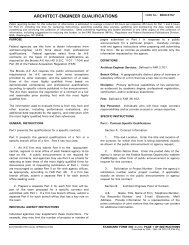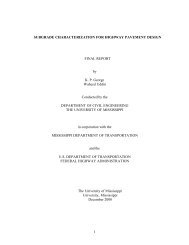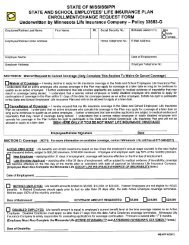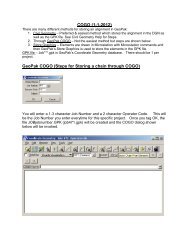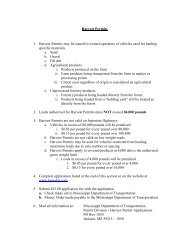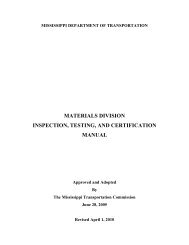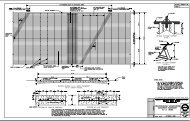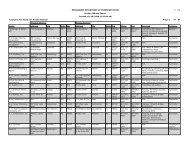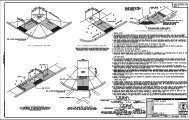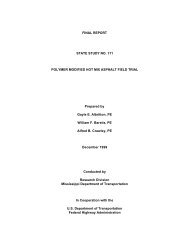Resin Modified Pavement Demonstration Project.pdf
Resin Modified Pavement Demonstration Project.pdf
Resin Modified Pavement Demonstration Project.pdf
You also want an ePaper? Increase the reach of your titles
YUMPU automatically turns print PDFs into web optimized ePapers that Google loves.
In 1987, the U.S. Army Corps of Engineers tasked WES to reevaluate theRMP process for potential military pavement applications, since the field experiencesin Europe continued to be positive and improved materials and constructionprocedures had been reported. WES engineers conducted literaturereviews, made site evaluations in France, Great Britain, and Australia, and constructedand evaluated a new test section at WES (Ahlrich and Anderton 1991b).The results of this evaluation were favorable, prompting pilot projects at severalmilitary installations in the following years. The Federal AviationAdministration (FAA), also eager to develop an alternative paving material technology,used the positive WES experiences and preliminary guidance toconstruct several pilot projects at commercial airports (Ahlrich and Anderton1993). Today, the RMP process is recommended as an alternative pavementsurfacing material by the U.S. Army, the U.S. Air Force, U.S. Navy, and theFAA.ApplicationsRMP may be used in new pavement construction or in the rehabilitation ofexisting pavement structures. A new RMP surfacing may be placed as an overlayover existing flexible or rigid pavements. RMP is typically used as a low-costalternative to a PCC rigid pavement or as a means of improving the pavementperformance over an AC surfaced flexible pavement. Field experience indicatesthat RMP may be used in practically any environmental conditions.In general, the RMP is best suited for pavements that are subjected to lowspeedtraffic that is channelized or abrasive by nature. <strong>Pavement</strong> areas withheavy static point loads and heavy fuel spillage are also ideal RMP applicationcandidates. The RMP process has been used in a variety of applications on theinternational market, including airport and vehicular pavements, industrial andwarehouse floorings, fuel depots and commercial gasoline stations, city plazasand malls, railway stations, and port facilities. Since its first commercial applicationin the Unites States in 1987, RMP has been used mostly on airport andairfield pavement projects. A listing of the known RMP projects in the UnitedStates is given in Table 1.Design MethodsThe current practice for designing the RMP layer thicknesses involves asimple adaptation of the standard Corps of Engineers (CE) flexible pavementdesign method (Headquarters, Departments of the Army and Air Force 1989 and1992). The pavement is designed as if it were a typical dense-graded ACsurfaced pavement, and then the top 50 mm of AC is substituted with an equalG - 12




